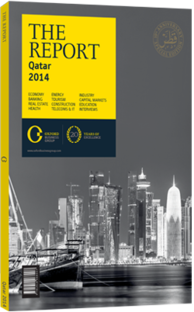OBG talks to Khalid bin Ibrahim Al Sulaiti, General Manager, Katara Cultural Village Foundation

Interview: Khalid bin Ibrahim Al Sulaiti
What demographic of tourist is being targeted through adding new cultural events, and how does this fit into the wider development strategy?
KHALID BIN IBRAHIM AL SULAITI: Qatar’s rising population and diverse range of expatriates are changing the demographics of the country. While the state is pursuing the preservation of local heritage, we must also aim to increase the diversity of visitor activities on offer in order to boost demand for our cultural products. We are seeking to be a distinct destination that caters not only to various segments of Qatari society, including citizens and residents, but also to visitors of all nationalities and ages.
In order for different events and activities to have a maximum impact, the sector has sought to increase integration and cooperation among its various stakeholders. In line with the Qatar Tourism Authority’s strategy to promote culture and family tourism and boost the number of regional visitors, several activities and events have been established. One such example is the Katara Third International Dhow Festival, which fits within this broader development strategy to revive the heritage of our Qatari ancestors before the oil boom and the development of the gas industry. Events of this nature not only aim to attract the entire spectrum of residents to learn about local culture, but also to educate youth in the region. Another major event, the 2013 Ramadan Festival, celebrated Arabic calligraphy and attracted both domestic and foreign visitors and artists alike.
How is a balance being sought between offering localised cultural experiences, and at the same time catering to an international audience?
AL SULAITI: One of the key drivers is the level of investment to attract international events such as the 2022 FIFA World Cup, 2006 Asian Games and other major events, which help to attract a global audience and highlight local culture. Another factor is cultural exchange both regionally and internationally. Continually attracting global and regional events which highlight different cultures is key to achieving such a balance. This has led to the diversification of events we have hosted, including showcasing the culture of Uzbekistan, Ecuador and Korea, among other nations. The Qatar Museums Authority (QMA) has also hosted a culture exchange programme with Japan and the UK. We are working to achieve the exchange of knowledge in the framework of cultural cooperation and partnership with many local and international bodies, which will reflect positively on Qatar’s conservative society.
To what extent does the regulation of the culture and heritage sector, and the protection of archaeological sites, need to be enhanced?
AL SULAITI: At present, there are more than 200 estimated archaeological sites in Qatar, and a number of heritage sites dating back to the 17th and 18th centuries, including the ruins of villages, forts, palaces and other structures. Most sites have not been formally registered, so there is room to improve the laws and regulations surrounding cultural preservation. The government is pursuing the preservation and promotion of cultural and heritage resources via the goals laid out under the Qatar National Development Strategy.
How is the heritage and culture industry encouraging the development of human capital?
AL SULAITI: Our vision ties into Qatar National Vision 2030, which aims to foster human and social development. The goal is to create an environment where artists and intellectuals from Qatar and overseas can help to revive the cultural scene and contribute to a thriving workforce. One of the key challenges is to ensure proper training and create venues where aspiring artists and professionals can practise their trade. Institutions like UCL Qatar, Doha Film Institute, QMA and Qatar Philharmonic are addressing these core issues by offering platforms for educational and professional opportunities. Further, Qatar is continuing to invest in physical infrastructure such as theatres, museums, galleries and other spaces where artists can showcase their work.
You have reached the limit of premium articles you can view for free.
Choose from the options below to purchase print or digital editions of our Reports. You can also purchase a website subscription giving you unlimited access to all of our Reports online for 12 months.
If you have already purchased this Report or have a website subscription, please login to continue.

